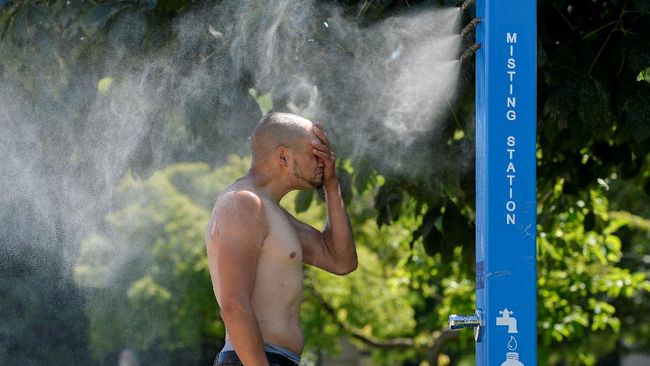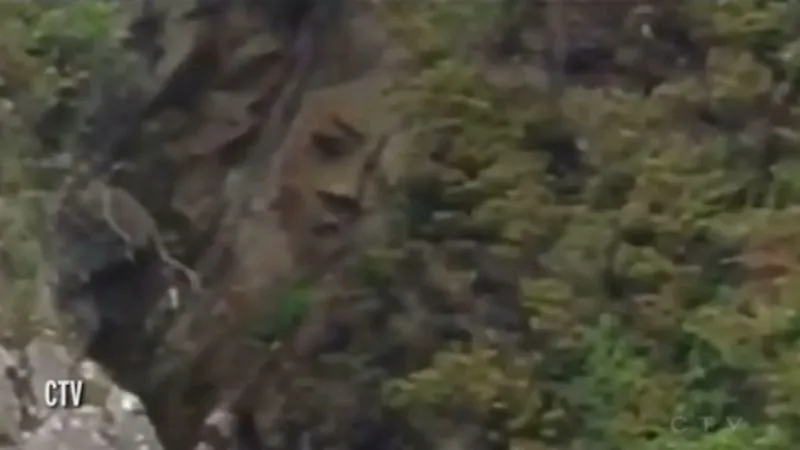JAKARTA, balipuspanews.com – The Meteorology, Climatology and Geophysics Agency (BMKG) said the use of technology has been shown to be effective in preventing forest and land fires (karhutla).
Based on this, the BMKG’s Deputy for Meteorology, Guswanto, revealed that in carrying out its main tasks and functions, the BMKG continues to use and develop the latest technologies. One of them is the technology for making weather forecasts.
“So we used the technology and we are doing it now. In my opinion, it is quite effective, although it still needs to be improved,” Guswanto said in a discussion hosted by West Merdeka Forum 9 (FMB9). entitled “Anticipate Forest and Land Fires”, on Monday (19/6/2023).
Thanks to the technology, BMKG was able to compile weather forecasts regularly on a semi-annual basis, i.e. semi-annual, monthly, weekly to daily update. In fact, BMKG currently has a forecasting technology called nowcasting.
Nowcasting describes current weather conditions and short-term extreme weather forecasts for very short periods, i.e. 0 to 6 hours in advance.
“So we have six-month, one-month, one-week and daily updates and nowcasts,” Guswanto explained.
Through forecasts submitted by BMKG, it can be used as a reference for early warning for other stakeholders, as well as the public in anticipation, one of which is to prevent karhutla.
“We can see that BMKG is using the technology using weather modeling and forecasting, so we are doing this to alert the public that this is the current situation,” he explained.
Measure cross-border smoke
Further, Guswanto explained that the use of technology can be used to measure the level and levels of transboundary haze or transboundary haze between countries, especially in border areas with neighboring countries.
In these areas, BMKG can observe transboundary haze using the Himawari satellite or the geostationary meteorological satellite (GMS).
“So it also helps us with regard to cross-border haze. We make observations through the Himawari (GMS) satellite. If there is cross-border smoke, we will discuss it and prove whether it really happened or no,” Guswanto said.
Currently, BMKG continues to support the Ministry of Environment and Forests by providing the necessary data regarding transboundary haze.
“So we provide the data to KLHK team and then discuss with other countries to prove how long or not there is cross-border smoke. If there is not, it means we are sheltered from cross-border haze,” he said.
Apart from the use of the Himawari satellite, BMKG also has an early warning system for forest and land fires or the so-called Fire Danger Rating System (FDRS). This technology was developed at the initiative of the Government of Canada, which was later developed into the Forest and Ground Fire Fighting System (SPARTAN).
Strengthening data analysis
On the same occasion, the Director General of Climate Change Control of the Ministry of Environment and Forestry, Laksmi Dwanthi, said that the Ministry of Environment and Forestry (KLHK) has strengthened climate analysis as a form prevention of the appearance of cross-border haze. due to forest and ground fires.
“From the analysis data, we make an early warning or continuous early warning system. So we don’t just do it when there is a forest fire, but we do it every day” , Laksmi said.
To prevent transboundary haze, Indonesia, through the Ministry of Environment and Forestry, has made three prevention efforts. First, strengthen climate and weather analysis to determine El Nino and La Nina phenomena.
From the analysis data, the Ministry of Environment and Forests as well as related parties who manage forest and land fires will receive updates of information from the field twice a day via the device. . Later, the government will set up an early warning system on an ongoing basis for the public.
The second effort is to intensify field operations with independent patrols carried out by forest firefighters from the Ministry of Environment and Forests. Apart from this, integrated patrols were also conducted with security forces, district/city government, TNI/Polri and the community.
For the community, the Ministry of Environment and Forests has strengthened the empowerment of local residents, including through the establishment of the Fire Care Community (MPA), which currently has 11,100 members across Indonesia.
“The Fire Care Community Group is not only prepared for firefighting, but actually to provide solutions to the community, especially to meet their social and economic needs, only then to benefit the environment”, did he declare.
Laksmi revealed that the Ministry of Environment and Forests has even created a landscape management system. In this way the government is able to intensify the introduction of good land burning practices without burning.
“This means that between 2020 and 2022 there will be absolutely no fires causing cross-border smoke. In 2015 there was a large forest fire, but at that time we had not put put in place a permanent solution. At that time, there was a period of about two months when the cross-border smoke event occurred,” he said.
Laksmi revealed that in 2016, smoke from forest and ground fires could be controlled. It only took two weeks for the smoke to clear. While in 2017 it was recorded that the smoke was visible in just two days.
Whereas in 2018 there was absolutely no cross-border smoke. Although the smoke came back to 2019 in two hours. From this period, all three efforts succeeded in quickly clearing the smoke and preventing greater state casualties.
Then, Laksmi pointed out that the prevention of cross-border fog, it is certain that it will continue to be carried out comprehensively, strengthening law enforcement and carrying out systematic and permanent prevention.
Meanwhile, Governor of West Kalimantan (West Kalimantan) Sutarmidji said that since 2019 his party had taken strong action against a number of companies that triggered the karhutla.
“It is necessary to take firm measures by imposing sanctions in the event of license suspension or a symbolic fine. Every land fire is at least subject to extinguishing costs, so the state has nothing to lose,” Sutarmidji said.
The West Kalimantan provincial government has also issued a warning regarding the sealing of a number of companies, as a form of surveillance so that these companies protect their respective territories.
“Then we issued a warning to 130 companies. If we can enforce the law like this, the companies will protect their territory,” Sutarmidji said.
As West Kalimantan’s peat area reaches 2.8 million hectares (ha), Sutarmidji believes the government is struggling to protect forest and land fires with such a large area. In government statistics, the decisive measures taken in 2019 had a positive effect in suppressing the increase in forest and ground fires in the region.
“In 2019 there were 20 business cases, 67 seals, 157 warnings, then 1 crime, 1 individual, 5 plantations, then 98 warning letters from the head of department. This is what we did in 2019 , Alhamdulillah 2020, 2021, 2022 we can control earth fires,” Sutarmidji said.
One strategy that can be used to reduce the number of forest and ground fires is to impose penalties for license suspensions or fines.
“My suggestion is that this should be the domain of the central government, namely to take firm action by imposing sanctions on license suspensions or fines which are determined in nominal terms. So the nominal is determined. Every land fire is at least subject to extinguishment costs, so the state has nothing to lose,” he said.
Moreover, he suggested that the government must find a joint solution that is permanent and long-term. It is important to raise awareness so that companies and communities clear the land without burning it, which starts fires.
“I am more inclined to say that the activity according to the direction of the president is a long-term solution. The long-term solution is that there are types of plants that can be planted, for example taro”, a- he declared.
The government must also hold accountable those who cultivate land without burning with roots whose harvests last more than 7 months and vegetable crops that can be harvested at any time.
This measure has been taken in a number of areas in West Kalimantan, such as Singkawang and Pontianak.
“Singkawang is very suitable for taro. Then, after planting taro, we prepare the flour plant. Then in North Pontianak there is an example of 800 hectares of bog but the fires almost never happen because they are transformed,” he explained.
In addition, it is necessary to prohibit the use of land for a certain period of time, for example 10 years for land belonging to a certain area.
Sutarmidji also pointed out the importance of a 1:50,000 scale topographic map of the peat ecosystem as planning material for the location or position of carrying out a drilled well.
He also pointed out the problem of the blockage of the canal which was only made to collect rainwater, but was not connected to the main canal like a river.
For this reason, he again stressed the importance of serious and comprehensive planning regarding the management of peatlands in order to minimize fires.
Author: Hardianto
Publisher: Oka Suryawan
– Advertisement –

“Travel nerd. Social media evangelist. Zombie junkie. Total creator. Avid webaholic. Friend of animals everywhere. Future teen idol.”


:strip_icc():format(jpeg)/kly-media-production/medias/3387188/original/007486800_1614303448-banner__1_.jpg)



